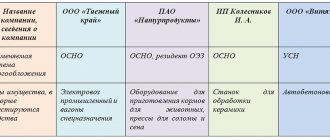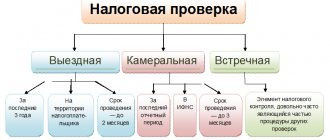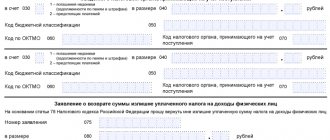Determination of the tax base
The section of the legislation of the Russian Federation devoted to taxation interprets in detail the concept of tax and all its elements. These issues are addressed in Article 8 of the Tax Code of the Russian Federation.
A tax is a mandatory fee established by the state for organizations and individuals, which provides for the contribution of a portion of their financial resources intended for the state budget.
Tax base is an element of tax that functions along with others:
- subject and object;
- rate;
- accounting tax period;
- method of accrual;
- features and timing of tax payments;
- possible benefits.
What kind of real estate belongs to both a shopping and administrative and business complex?
Art. 378.2 of the Tax Code of the Russian Federation also contains a description of those features of a real estate property that provide grounds for its recognition as both a trade and administrative and business complex or center (clause 4.1 of Article 378.2 of the Tax Code of the Russian Federation).
Such objects should be considered individual non-residential buildings and structures in which at least 20% of the area is actually occupied or intended according to cadastral passports for administrative offices, office support premises, meeting rooms, reception areas, as well as retail, consumer services and public catering facilities.
What is the tax base
The tax base characterizes the item subject to taxation in terms of quantity, value, physical properties or other characteristics. In other words, the tax base defines the units in which the object of taxation can be “measured.” the object of taxation is .
The item on which the tax is levied is called its object. It can be represented by various assets and financial amounts, for example:
- income, receipts, profit;
- cost of goods sold;
- payment received for services rendered or work performed;
- total income of an individual;
- own property owned by organizations and citizens;
- hereditary mass;
- vehicles, etc.
NOTE! Most often, the name of the tax reflects precisely its object: “income tax”, “land tax”, etc.
So, we conclude: the item on which tax must be paid is considered an object of taxation, and the tax base is its significant characteristic.
What real estate objects are classified as administrative and business centers?
The legislation classifies as administrative and business centers certain non-residential buildings or structures that correspond to one of the following criteria (clause 3 of Article 378.2 of the Tax Code of the Russian Federation):
- the objects are located on land plots on which office buildings intended for business, commercial or administrative activities can be located (subclause 1);
- premises designated according to cadastral passports or actually used for offices and related business infrastructure, business meeting rooms, reception areas and other premises constitute at least 20% of the area of administrative buildings (subclause 2).
To find out whether a built but not yet used real estate property necessarily becomes subject to taxation, read the article “Should I pay property tax if an organization has received permission to put the property into operation, but has not started using it?”
How does the tax base affect the amount of tax?
Any payer is primarily concerned with the question: “Exactly how much will I need to pay?” The concept of the tax base coupled with the application of the tax rate is designed to answer this.
The amount of tax paid is the product of the tax base and the tax rate.
The tax base regulates the units in which the tax is calculated, and the tax rate , in turn, shows what proportion of these units must be allocated to the state. This relationship can be of two types:
- firm - the absolute amount for each unit of the tax base (more often used when calculating taxes, the base of which allows you to assign a fixed amount to each characteristic of the tax base, for example, transport, excise, land taxes);
- interest – one or another percentage of the entire quantitative expression of the tax base is subject to payment.
Types of interest rates
Depending on how the tax percentage is set, interest rates can be of different types:
- proportional - the same percentage is always deducted from the tax base as tax (examples - income tax, VAT);
- progressive - the higher the tax base, the greater the deductible percentage will be, and both the entire base and its individual parts can be taken into account (the modern Russian Tax Code does not apply rates of this type);
- regressive - the lower the tax base, the more the tax percentage will decrease.
General calculation standards
The tax base is calculated at the end of each tax period. Such rules are established not only for all taxpayers, but also for agents. If reporting periods are provided for a specific fiscal obligation, then the calculation of the indicator is carried out based on the results of all reporting periods.
There is no single procedure for finding the tax base, since it is determined individually depending on the type of tax, the level of legislative power, and the tax regime of the payer.
Thus, the tax base is determined - the calculation formula:
- For personal income tax: the total amount of income received (accrued) - income excluded from the calculation - tax deductions.
- For income tax: taxable income – permitted types of expenses and expenses.
- For VAT: the amount of goods, works, services sold in the reporting period - provided deductions.
- According to the simplified tax system: the total amount of income or the difference between revenue and costs.
- For property fees: the value of property, land, determined as of a specific date.
Let us note that in each case, legislators have provided an exclusive list of benefits, concessions and deductions that can significantly reduce the volume of the tax base when calculating the amounts of fiscal burden.
Elements that reduce the tax base
Naturally, for the taxpayer, from a financial point of view, it is more profitable for the tax base to be as small as possible, then a smaller amount of taxes will be paid from it. The law allows you to reduce the amount to be multiplied by the tax rate by the following economic values:
- tax deductions – it is allowed not to include categories of amounts specified by law in the taxable amount (these include standard deductions, pension, charitable, “children’s” and some others);
- tax benefits - financial advantages for certain categories established by the Government (lower tax amount, reduction of the tax rate, establishment of a minimum that is not subject to taxation, complete abolition of payment of a particular tax).
So, if we express the tax base as a formula, it will look like this:
NB = SD – V – L
Where:
- NB – tax base;
- B – tax deductions provided for by law and applicable to a given taxpayer;
- L – tax benefits valid for a given tax and category of payers.
Tax base and object of taxation
Before we talk about calculating the actual tax base for profits, a little theory. It will help us distinguish between two seemingly similar concepts, such as “object of taxation” and “ tax base,” and feel the difference between them. And it is significant.
Thus, the object of taxation is some circumstance (for each tax it is different), which gives rise to the obligation to calculate the tax and, if there is an amount to be paid, transfer it to the budget. For example, this could be sales or income.
For the calculation to be practically feasible, the circumstance (object of taxation) must be measured in some way, that is, have an appropriate characteristic - often cost, less often quantitative or physical. This characteristic is the tax base .
Domestic principles for calculating the tax base
In modern Russian legislation, the tax base meets the following mandatory requirements.
- All issues related to the method of determining and the procedure for establishing the tax base are regulated by the Tax Code of the Russian Federation.
- Each accounting period is reflected in the financial documentation maintained by the taxpayer, and on the basis of these documentary evidence, the quantitative characteristics of the tax base are calculated at the end of each individual period.
- If in the current period an error was found in the calculation of the tax base relating to an already expired period of time, it is necessary to recalculate the tax base of the “erroneous” period.
- If the period in which the error was made cannot be accurately determined, it will be necessary to recalculate the tax base at the present time, that is, in the reporting period.
- The procedure for calculating the tax base is determined by the Ministry of Finance of the Russian Federation. Accounting for profits and costs based on business results for the required period reflected in the financial documentation should be kept by:
- individual entrepreneurs;
- organizations;
- tax agents.
- Individual taxpayers take as the basis for calculating the tax base their own profit accounting data, as well as information received from the other party - the counterparty of their activities (organization, other individual).
What real estate is classified as non-residential premises for administrative, business and commercial purposes?
Non-residential premises with administrative, business and trade purposes are considered to be premises on the territory of which, according to cadastral passports, it is necessary to locate administrative offices, trade facilities, consumer services and public catering, or those actually used for these purposes (Subclause 2, Clause 1, Article 378.2 of the Tax Code of the Russian Federation). The actual use of non-residential premises is considered if at least 20% of its area is used for the listed purposes (clause 5 of Article 378.2 of the Tax Code of the Russian Federation).
For information on what to do with property tax if a property is included in the cadastral list by mistake, read the material How to pay property tax if the property is included in the cadastral list by mistake .
Who pays property taxes on rental properties? The answer to this question is in ConsultantPlus. Get free demo access to K+ and get tips from the experts.
Methods for accounting for the tax base
Russian tax legislation provides two methods for accounting for the tax base.
- Cash - only those amounts of profits or expenses are taken into account that are actually reflected in certain documentation as received (or incurred) by the tax payer. These may be funds received to the current account, reflected using cash register equipment, etc.
- Cumulative – the moment at which the taxpayer acquired property rights or obligations is taken into account. It does not matter whether the funds were actually received (spent): if the taxpayer has the right to receive them (or the obligation to spend them), the funds are included in the calculation as part of the tax base.
List of objects available in the Tax Code of the Russian Federation
The Tax Code of the Russian Federation contains the following list of real estate objects, for which the tax base is calculated based on the cadastral value (subclause 1, 2 clause 1, subclause 1 clause 7 of article 378.2):
- administrative and business centers and premises located in them;
- shopping complexes and premises located in them;
- non-residential premises with a purpose similar to that given in the first 2 paragraphs;
- residential premises, garages, parking spaces, unfinished construction, outbuildings and structures in areas cleared for private household plots.
ConsultantPlus experts explained in detail which company property is subject to property tax and which is not. If you don't have access to the system, get a free trial online.



